SEO
New Google Search Ads Resemble AI Assistant App

A keynote at Google’s Marketing Live event showed a new AI-powered visual search results that feature advertisements that engage users within the context of an AI-Assisted search, blurring the line between AI-generated search results and advertisements.
Google Lens is a truly helpful app but it becomes unconventional where it blurs the line between an assistant helping users and being led to a shopping cart. This new way of engaging potential customers with AI is so far out there that the presenter doesn’t even call it advertising, he doesn’t even use the word.
Visual Search Traffic Opportunity?
Google’s Group Product Manager Sylvanus Bent, begins the presentation with an overview of the next version of Google Lens visual search that will be useful for surfacing information and for help finding where to buy them.
Sylvanus explained how it will be an opportunity for websites to receive traffic from this new way to search.
“…whether you’re snapping a photo with lens or circling to search something on your social feed, visual search unlocks new ways to explore whatever catches your eye, and we recently announced a newly redesigned results page for Visual search.
Soon, instead of just visual matches, you’ll see a wide range of results, from images to video, web links, and facts about the knowledge graph. It gets people the helpful information they need and creates new opportunities for sites to be discovered.”
It’s hard to say whether or not this will bring search traffic to websites and what the quality of that traffic will be. Will they stick around to read an article? Will they engage with a product review?
Visual Search Results
Sylvanus shares a hypothetical example of someone at an airport baggage claim who falls in like with someone else’s bag. He explains that all the person needs to do is snap a photo of the luggage bag and Google Lens will take them directly to shopping options.
He explains:
“No words, no problem. Just open Lens, take a quick picture and immediately you’ll see options to purchase.
And for the first time, shopping ads will appear at the very top of the results on linked searches, where a business can offer what a consumer is looking for.
This will help them easily purchase something that catches their eye.”
These are image-heavy shopping ads at the top of the search results and as annoying as that may be it’s nowhere near the “next level” advertising that is coming to Google’s search ads where Google presents a paid promotion within the context of an AI Assistant.
Interactive Search Shopping
Sylvanus next describes an AI-powered form advertising that happens directly within search. But he doesn’t call it advertising. He doesn’t even use the word advertising. He suggests this new form of AI search experience is more than offer, saying that, “it’s an experience.”
He’s right to not use the word advertisement because what he describes goes far beyond advertising and blurs the boundaries between search and advertising within the context of AI-powered suggestions, paid suggestions.
Sylvanus explains how this new form of shopping experience works:
“And next, imagine a world where every search ad is more than an offer. It’s an experience. It’s a new way for you to engage more directly with your customers. And we’re exploring search ads with AI powered recommendations across different verticals. So I want to show you an example that’s going live soon and you’ll see even more when we get to shopping.”
He uses the example of someone who needs to store their furniture for a few months and who turns to Google to find short term storage. What he describes is a query for local short term storage that turns into a “dynamic ad experience” that leads the searcher into throwing packing supplies into their shopping cart.
He narrated how it works:
“You search for short term storage and you see an ad for extra space storage. Now you can click into a new dynamic ad experience.
You can select and upload photos of the different rooms in your house, showing how much furniture you have, and then extra space storage with help from Google, AI generates a description of all your belongings for you to verify. You get a recommendation for the right size and type of storage unit and even how much packing supplies you need to get the job done. Then you just go to the website to complete the transaction.
And this is taking the definition of a helpful ad to the next level. It does everything but physically pick up your stuff and move it, and that is cool.”
Step 1: Search For Short Term Storage
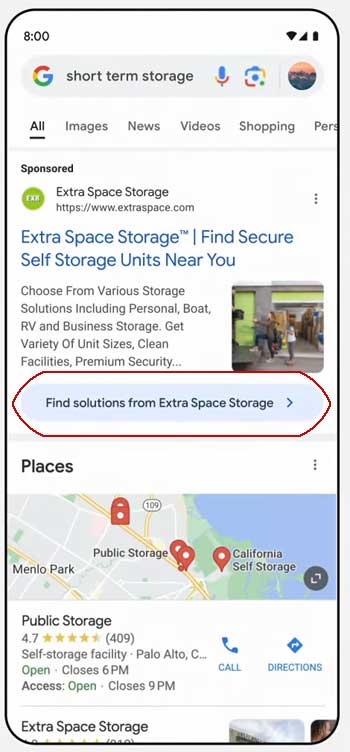
The above screenshot shows an advertisement that when clicked takes the user to what looks like an AI-assisted search but is really an interactive advertisement.
Step 2: Upload Photos For “AI Assistance”
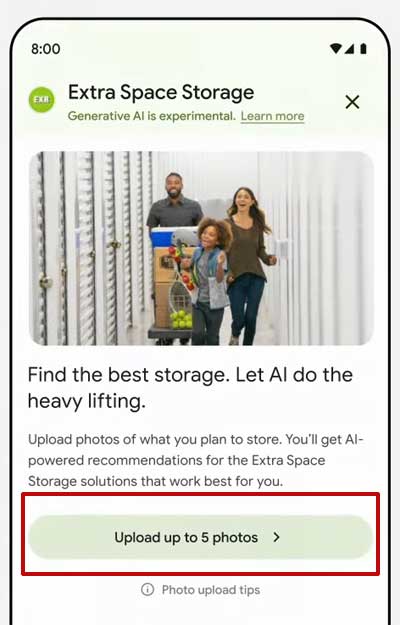
The above image is a screenshot of an advertisement that is presented in the context of AI-assisted search. Masking an advertisement within a different context is the same principal behind an advertorial where an advertisement is hidden in the form of an article. The phrases “Let AI do the heavy lifting” and “AI-powered recommendations” create the context of AI-search that masks the true context of an advertisement.
Step 3: Images Chosen For Uploading

The above screenshot shows how a user uploads an image to the AI-powered advertisement within the context of an AI-powered search app.
The Word “App” Masks That This Is An Ad
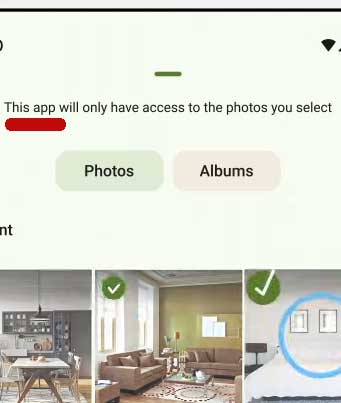
Above is a screenshot of how a user uploads a photo to the AI-powered interactive advertisement within the context of a visual search engine, using the word “app” to further the illusion that the user is interacting with an app and not an advertisement.
Upload Process Masks The Advertising Context

The phrase “Generative AI is experimental” contributes to the illusion that this is an AI-assisted search.
Step 4: Upload Confirmation

In step 4 the “app” advertisement is for confirming that the AI correctly identified the furniture that needs to be put into storage.
Step 5: AI “Recommendations”
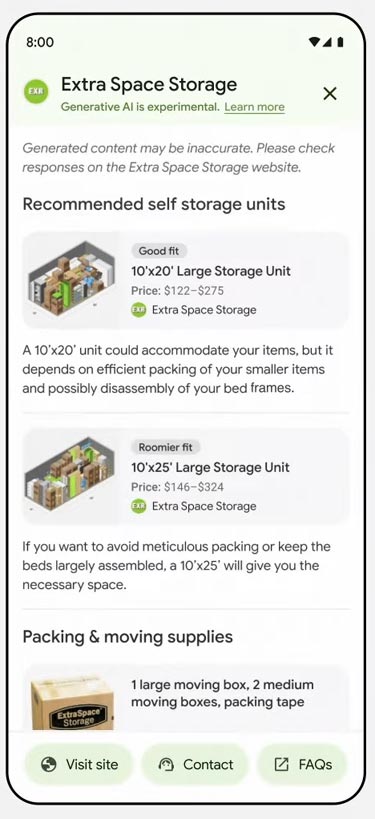
The above screenshot shows “AI recommendations” that look like search results.
The Recommendations Are Ad Units

Those recommendations are actually ad units that when clicked takes the user to the “Extra Space Storage” shopping website.
Step 6: Searcher Visits Advertiser Website
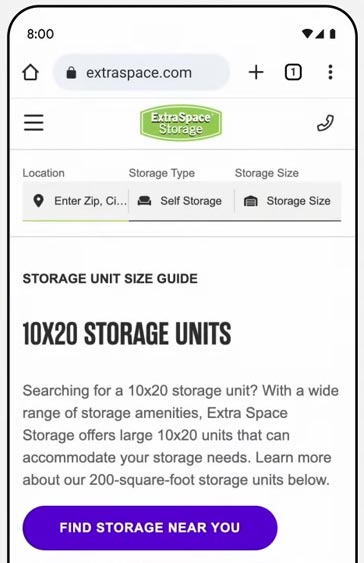
Blurring The Boundaries
What the Google keynote speaker describes is the integration of paid product suggestions into an AI assisted search. This kind of advertising is so far out there that the Googler doesn’t even call it advertising and rightfully so because what this does is blur the line between AI assisted search and advertising. At what point does a helpful AI search become just a platform for using AI to offer paid suggestions?
Watch The Keynote At The 32 Minute Mark
Featured Image by Shutterstock/Ljupco Smokovski
SEO
Google Answers Question About Toxic Link Sabotage

Google’s Gary Illyes answered a question about how to notify Google that someone is poisoning their backlink profile with “toxic links” which is a problem that many people have been talking about for at least fifteen years.
Question About Alerting Google To Toxic Links
Gary narrated the question:
“Someone’s asking, how to alert Google of sabotage via toxic links?”
And this is Gary’s answer:
I know what I would do: I’d ignore those links.
Generally Google is really, REALLY good at ignoring links that are irrelevant to the site they’re pointing at. If you feel like it, you can always disavow those “toxic” links, or file a spam report.
Disavow Links If You Feel Like It
Gary linked to Google’s explainer about disavowing links where it’s explained that the disavow tool is for a site owner to tell Google about links that they are responsible for in some way, like paid links or some other link scheme.
This is what it advises:
“If you have a manual action against your site for unnatural links to your site, or if you think you’re about to get such a manual action (because of paid links or other link schemes that violate our quality guidelines), you should try to remove the links from the other site to your site. If you can’t remove those links yourself, or get them removed, then you should disavow the URLs of the questionable pages or domains that link to your website.”
Google suggests that a link disavow is only necessary when two conditions are met:
- “You have a considerable number of spammy, artificial, or low-quality links pointing to your site,
AND- The links have caused a manual action, or likely will cause a manual action, on your site.”
Both of the above conditions must be met in order to file a valid link disavow tool.
Origin Of The Phrase Toxic Links
As Google became better at penalizing sites for low quality links and paid links, some in the highly competitive gambling industry started creating low quality links to sabotage their competitors. The practice was called negative SEO.
The phrase toxic link is something that was never heard of until after the Penguin link updates in 2012 which required penalized sites to remove all the paid and low quality links they created and then disavow the rest. An industry grew around disavowing links and it was that industry that invented the phrase Toxic Links for use in their marketing.
Confirmation That Google Is Able To Ignore Links
I have shared this anecdote before and I’ll share it here again. Someone I knew contacted me and said that their site lost rankings from negative SEO links. I took a look and their site had a ton of really nasty looking links. So out of curiosity (and because I knew that the site was this person’s main income), I emailed someone at Google Mountain View headquarters about it. That person checked it and replied that the site didn’t lose rankings because of the links. They lost rankings because of a Panda update related content issue.
That was around 2012 and it showed me how good Google was at ignoring links. Now, if Google was that good at ignoring really bad links back then, they’re probably better at it now, twelve years later now that they have the spam brain AI.
Listen to the question and answer at the 8:22 minute mark:
Featured Image by Shutterstock/New Africa
SEO
How To Build A Diverse & Healthy Link Profile

Search is evolving at an incredible pace and new features, formats, and even new search engines are popping up within the space.
Google’s algorithm still prioritizes backlinks when ranking websites. If you want your website to be visible in search results, you must account for backlinks and your backlink profile.
A healthy backlink profile requires a diverse backlink profile.
In this guide, we’ll examine how to build and maintain a diverse backlink profile that powers your website’s search performance.
What Does A Healthy Backlink Profile Look Like?
As Google states in its guidelines, it primarily crawls pages through links from other pages linked to your pages, acquired through promotion and naturally over time.
In practice, a healthy backlink profile can be divided into three main areas: the distribution of link types, the mix of anchor text, and the ratio of followed to nofollowed links.
Let’s look at these areas and how they should look within a healthy backlink profile.
Distribution Of Link Types
One aspect of your backlink profile that needs to be diversified is link types.
It looks unnatural to Google to have predominantly one kind of link in your profile, and it also indicates that you’re not diversifying your content strategy enough.
Some of the various link types you should see in your backlink profile include:
- Anchor text links.
- Image links.
- Redirect links.
- Canonical links.
Here is an example of the breakdown of link types at my company, Whatfix (via Semrush):
Most links should be anchor text links and image links, as these are the most common ways to link on the web, but you should see some of the other types of links as they are picked up naturally over time.
Mix Of Anchor Text
Next, ensure your backlink profile has an appropriate anchor text variance.
Again, if you overoptimize for a specific type of anchor text, it will appear suspicious to search engines like Google and could have negative repercussions.
Here are the various types of anchor text you might find in your backlink profile:
- Branded anchor text – Anchor text that is your brand name or includes your brand name.
- Empty – Links that have no anchor text.
- Naked URLs – Anchor text that is a URL (e.g., www.website.com).
- Exact match keyword-rich anchor text – Anchor text that exactly matches the keyword the linked page targets (e.g., blue shoes).
- Partial match keyword-rich anchor text – Anchor text that partially or closely matches the keyword the linked page targets (e.g., “comfortable blue footwear options”).
- Generic anchor text – Anchor text such as “this website” or “here.”
To maintain a healthy backlink profile, aim for a mix of anchor text within a similar range to this:
- Branded anchor text – 35-40%.
- Partial match keyword-rich anchor text – 15-20%.
- Generic anchor text -10-15%.
- Exact match keyword-rich anchor text – 5-10%.
- Naked URLs – 5-10%.
- Empty – 3-5%.
This distribution of anchor text represents a natural mix of differing anchor texts. It is common for the majority of anchors to be branded or partially branded because most sites that link to your site will default to your brand name when linking. It also makes sense that the following most common anchors would be partial-match keywords or generic anchor text because these are natural choices within the context of a web page.
Exact-match anchor text is rare because it only happens when you are the best resource for a specific term, and the site owner knows your page exists.
Ratio Of Followed Vs. Nofollowed Backlinks
Lastly, you should monitor the ratio of followed vs. nofollowed links pointing to your website.
If you need a refresher on what nofollowed backlinks are or why someone might apply the nofollow tag to a link pointing to your site, check out Google’s guide on how to qualify outbound links to Google.
Nofollow attributes should only be applied to paid links or links pointing to a site the linking site doesn’t trust.
While it is not uncommon or suspicious to have some nofollow links (people misunderstand the purpose of the nofollow attribute all the time), a healthy backlink profile will have far more followed links.
You should aim for a ratio of 80%:20% or 70%:30% in favor of followed links. For example, here is what the followed vs. nofollowed ratio looks like for my company’s backlink profile (according to Ahrefs):
 Screenshot from Ahrefs, May 2024
Screenshot from Ahrefs, May 2024You may see links with other rel attributes, such as UGC or Sponsored.
The “UGC” attribute tags links from user-generated content, while the “Sponsored” attribute tags links from sponsored or paid sources. These attributes are slightly different than the nofollow tag, but they essentially work the same way, letting Google know these links aren’t trusted or endorsed by the linking site. You can simply group these links in with nofollowed links when calculating your ratio.
Importance Of Diversifying Your Backlink Profile
So why is it important to diversify your backlink profile anyway? Well, there are three main reasons you should consider:
- Avoiding overoptimization.
- Diversifying traffic sources.
- And finding new audiences.
Let’s dive into each of these.
Avoiding Overoptimization
First and foremost, diversifying your backlink profile is the best way to protect yourself from overoptimization and the damaging penalties that can come with it.
As SEO pros, our job is to optimize websites to improve performance, but overoptimizing in any facet of our strategy – backlinks, keywords, structure, etc. – can result in penalties that limit visibility within search results.
In the previous section, we covered the elements of a healthy backlink profile. If you stray too far from that model, your site might look suspicious to search engines like Google and you could be handed a manual or algorithmic penalty, suppressing your rankings in search.
Considering how regularly Google updates its search algorithm these days (and how little information surrounds those updates), you could see your performance tank and have no idea why.
This is why it’s so important to keep a watchful eye on your backlink profile and how it’s shaping up.
Diversifying Traffic Sources
Another reason to cultivate a diverse backlink profile is to ensure you’re diversifying your traffic sources.
Google penalties come swiftly and can often be a surprise. If you have all your eggs in that basket when it comes to traffic, your site will suffer badly and might need help to recover.
However, diversifying your traffic sources (search, social, email, etc.) will mitigate risk – similar to a stock portfolio – as you’ll have other traffic sources to provide a steady flow of visitors if another source suddenly dips.
Part of building a diverse backlink profile is acquiring a diverse set of backlinks and backlink types, and this strategy will also help you find differing and varied sources of traffic.
Finding New Audiences
Finally, building a diverse backlink profile is essential, as doing so will also help you discover new audiences.
If you acquire links from the same handful of websites and platforms, you will need help expanding your audience and building awareness for your website.
While it’s important to acquire links from sites that cater to your existing audience, you should also explore ways to build links that can tap into new audiences. The best way to do this is by casting a wide net with various link acquisition tactics and strategies.
A diverse backlink profile indicates a varied approach to SEO and marketing that will help bring new visitors and awareness to your site.
Building A Diverse Backlink Profile
So that you know what a healthy backlink profile looks like and why it’s important to diversify, how do you build diversity into your site’s backlink profile?
This comes down to your link acquisition strategy and the types of backlinks you actively pursue. To guide your strategy, let’s break link building into three main categories:
- Foundational links.
- Content promotion.
- Community involvement.
Here’s how to approach each area.
Foundational Links
Foundational links represent those links that your website simply should have. These are opportunities where a backlink would exist if all sites were known to all site owners.
Some examples of foundational links include:
- Mentions – Websites that mention your brand in some way (brand name, product, employees, proprietary data, etc.) on their website but don’t link.
- Partners – Websites that belong to real-world partners or companies you connect with offline and should also connect (link) with online.
- Associations or groups – Websites for offline associations or groups you belong to where your site should be listed with a link.
- Sponsorships – Any events or organizations your company sponsors might have websites that could (and should) link to your site.
- Sites that link to competitors – If a website is linking to a competitor, there is a strong chance it would make sense for them to link to your site as well.
These link opportunities should set the foundation for your link acquisition efforts.
As the baseline for your link building strategy, you should start by exhausting these opportunities first to ensure you’re not missing highly relevant links to bolster your backlink profile.
Content Promotion
Next, consider content promotion as a strategy for building a healthy, diverse backlink profile.
Content promotion is much more proactive than the foundational link acquisition mentioned above. You must manifest the opportunity by creating link-worthy content rather than simply capitalizing on an existing opportunity.
Some examples of content promotion for links are:
- Digital PR – Digital PR campaigns have numerous benefits and goals beyond link acquisition, but backlinks should be a primary KPI.
- Original research – Similar to digital PR, original research should focus on providing valuable data to your audience. Still, you should also make sure any citations or references to your research are correctly linked.
- Guest content – Whether regular columns or one-off contributions, providing guest content to websites is still a viable link acquisition strategy – when done right. The best way to gauge your guest content strategy is to ask yourself if you would still write the content for a site without guaranteeing a backlink, knowing you’ll still build authority and get your message in front of a new audience.
- Original imagery – Along with research and data, if your company creates original imagery that offers unique value, you should promote those images and ask for citation links.
Content promotion is a viable avenue for building a healthy backlink profile as long as the content you’re promoting is worthy of links.
Community Involvement
Community involvement is the final piece of your link acquisition puzzle when building a diverse backlink profile.
After pursuing all foundational opportunities and manually promoting your content, you should ensure your brand is active and represented in all the spaces and communities where your audience engages.
In terms of backlinks, this could mean:
- Wikipedia links – Wikipedia gets over 4 billion monthly visits, so backlinks here can bring significant referral traffic to your site. However, acquiring these links is difficult as these pages are moderated closely, and your site will only be linked if it is legitimately a top resource on the web.
- Forums (Reddit, Quora, etc.) – Another great place to get backlinks that drive referral traffic is forums like Reddit and Quora. Again, these forums are strictly moderated, and earning link placements on these sites requires a page that delivers significant and unique value to a specific audience.
- Social platforms – Social media platforms and groups represent communities where your brand should be active and engaged. While these strategies are likely handled by other teams outside SEO and focus on different metrics, you should still be intentional about converting these interactions into links when or where possible.
- Offline events – While it may seem counterintuitive to think of offline events as a potential source for link acquisition, legitimate link opportunities exist here. After all, most businesses, brands, and people you interact with at these events also have websites, and networking can easily translate to online connections in the form of links.
While most of the link opportunities listed above will have the nofollow link attribute due to the nature of the sites associated with them, they are still valuable additions to your backlink profile as these are powerful, trusted domains.
These links help diversify your traffic sources by bringing substantial referral traffic, and that traffic is highly qualified as these communities share your audience.
How To Avoid Developing A Toxic Backlink Profile
Now that you’re familiar with the link building strategies that can help you cultivate a healthy, diverse backlink profile, let’s discuss what you should avoid.
As mentioned before, if you overoptimize one strategy or link, it can seem suspicious to search engines and cause your site to receive a penalty. So, how do you avoid filling your backlink profile with toxic links?
Remember The “Golden Rule” Of Link Building
One simple way to guide your link acquisition strategy and avoid running afoul of search engines like Google is to follow one “golden rule.”
That rule is to ask yourself: If search engines like Google didn’t exist, and the only way people could navigate the web was through backlinks, would you want your site to have a link on the prospective website?
Thinking this way strips away all the tactical, SEO-focused portions of the equation and only leaves the human elements of linking where two sites are linked because it makes sense and makes the web easier to navigate.
Avoid Private Blog Networks (PBNs)
Another good rule is to avoid looping your site into private blog networks (PBNs). Of course, it’s not always obvious or easy to spot a PBN.
However, there are some common traits or red flags you can look for, such as:
- The person offering you a link placement mentions they have a list of domains they can share.
- The prospective linking site has little to no traffic and doesn’t appear to have human engagement (blog comments, social media followers, blog views, etc.).
- The website features thin content and little investment into user experience (UX) and design.
- The website covers generic topics and categories, catering to any and all audiences.
- Pages on the site feature numerous external links but only some internal links.
- The prospective domain’s backlink profile features overoptimization in any of the previously discussed forms (high-density of exact match anchor text, abnormal ratio of nofollowed links, only one or two link types, etc.).
Again, diversification – in both tactics and strategies – is crucial to building a healthy backlink profile, but steering clear of obvious PBNs and remembering the ‘golden rule’ of link building will go a long way toward keeping your profile free from toxicity.
Evaluating Your Backlink Profile
As you work diligently to build and maintain a diverse, healthy backlink profile, you should also carve out time to evaluate it regularly from a more analytical perspective.
There are two main ways to evaluate the merit of your backlinks: leverage tools to analyze backlinks and compare your backlink profile to the greater competitive landscape.
Leverage Tools To Analyze Backlink Profile
There are a variety of third-party tools you can use to analyze your backlink profile.
These tools can provide helpful insights, such as the total number of backlinks and referring domains. You can use these tools to analyze your full profile, broken down by:
- Followed vs. nofollowed.
- Authority metrics (Domain Rating, Domain Authority, Authority Score, etc.).
- Backlink types.
- Location or country.
- Anchor text.
- Top-level domain types.
- And more.
You can also use these tools to track new incoming backlinks, as well as lost backlinks, to help you better understand how your backlink profile is growing.
Some of the best tools for analyzing your backlink profile are:
Many of these tools also have features that estimate how toxic or suspicious your profile might look to search engines, which can help you detect potential issues early.
Compare Your Backlink Profile To The Competitive Landscape
Lastly, you should compare your overall backlink profile to those of your competitors and those competing with your site in the search results.
Again, the previously mentioned tools can help with this analysis – as far as providing you with the raw numbers – but the key areas you should compare are:
- Total number of backlinks.
- Total number of referring domains.
- Breakdown of authority metrics of links (Domain Rating, Domain Authority, Authority Score, etc.).
- Authority metrics of competing domains.
- Link growth over the last two years.
Comparing your backlink profile to others within your competitive landscape will help you assess where your domain currently stands and provide insight into how far you must go if you’re lagging behind competitors.
It’s worth noting that it’s not as simple as whoever has the most backlinks will perform the best in search.
These numbers are typically solid indicators of how search engines gauge the authority of your competitors’ domains, and you’ll likely find a correlation between strong backlink profiles and strong search performance.
Approach Link Building With A User-First Mindset
The search landscape continues to evolve at a breakneck pace and we could see dramatic shifts in how people search within the next five years (or sooner).
However, at this time, search engines like Google still rely on backlinks as part of their ranking algorithms, and you need to cultivate a strong backlink profile to be visible in search.
Furthermore, if you follow the advice in this article as you build out your profile, you’ll acquire backlinks that benefit your site regardless of search algorithms, futureproofing your traffic sources.
Approach link acquisition like you would any other marketing endeavor – with a customer-first mindset – and over time, you’ll naturally build a healthy, diverse backlink profile.
More resources:
Featured Image: Sammby/Shutterstock
SEO
Google On Traffic Diversity As A Ranking Factor

Google’s SearchLiaison tweeted encouragement to diversify traffic sources, being clear about the reason he was recommending it. Days later, someone followed up to ask if traffic diversity is a ranking factor, prompting SearchLiaison to reiterate that it is not.
What Was Said
The question of whether diversity of traffic was a ranking factor was elicited from a previous tweet in a discussion about whether a site owner should be focusing on off-site promotion.
Here’s the question from the original discussion that was tweeted:
“Can you please tell me if I’m doing right by focusing on my site and content – writing new articles to be found through search – or if I should be focusing on some off-site effort related to building a readership? It’s frustrating to see traffic go down the more effort I put in.”
SearchLiaison split the question into component parts and answered each one. When it came to the part about off-site promotion, SearchLiaison (who is Danny Sullivan), shared from his decades of experience as a journalist and publisher covering technology and search marketing.
I’m going to break down his answer so that it’s clearer what he meant
This is the part from the tweet that talks about off-site activities:
“As to the off-site effort question, I think from what I know from before I worked at Google Search, as well as my time being part of the search ranking team, is that one of the ways to be successful with Google Search is to think beyond it.”
What he is saying here is simple, don’t limit your thinking about what to do with your site to thinking about how to make it appeal to Google.
He next explains that sites that rank tend to be sites that are created to appeal to people.
SearchLiaison continued:
“Great sites with content that people like receive traffic in many ways. People go to them directly. They come via email referrals. They arrive via links from other sites. They get social media mentions.”
What he’s saying there is that you’ll know that you’re appealing to people if people are discussing your site in social media, if people are referring the site in social media and if other sites are citing it with links.
Other ways to know that a site is doing well is when when people engage in the comments section, send emails asking follow up questions, and send emails of thanks and share anecdotes of their success or satisfaction with a product or advice.
Consider this, fast fashion site Shein at one point didn’t rank for their chosen keyword phrases, I know because I checked out of curiosity. But they were at the time virally popular and making huge amounts of sales by gamifying site interaction and engagement, propelling them to become a global brand. A similar strategy propelled Zappos when they pioneered no-questions asked returns and cheerful customer service.
SearchLiaison continued:
“It just means you’re likely building a normal site in the sense that it’s not just intended for Google but instead for people. And that’s what our ranking systems are trying to reward, good content made for people.”
SearchLiaison explicitly said that building sites with diversified content is not a ranking factor.
He added this caveat to his tweet:
“This doesn’t mean you should get a bunch of social mentions, or a bunch of email mentions because these will somehow magically rank you better in Google (they don’t, from how I know things).”
Despite The Caveat…
A journalist tweeted this:
“Earlier this week, @searchliaison told people to diversify their traffic. Naturally, people started questioning whether that meant diversity of traffic was a ranking factor.
So, I asked @iPullRank what he thought.”
SearchLiaison of course answered that he explicitly said it’s not a ranking factor and linked to his original tweet that I quoted above.
He tweeted:
“I mean that’s not exactly what I myself said, but rather repeat all that I’ll just add the link to what I did say:”
The journalist responded:
“I would say this is calling for publishers to diversify their traffic since you’re saying the great sites do it. It’s the right advice to give.”
And SearchLiaison answered:
“It’s the part of “does it matter for rankings” that I was making clear wasn’t what I myself said. Yes, I think that’s a generally good thing, but it’s not the only thing or the magic thing.”
Not Everything Is About Ranking Factors
There is a longstanding practice by some SEOs to parse everything that Google publishes for clues to how Google’s algorithm works. This happened with the Search Quality Raters guidelines. Google is unintentionally complicit because it’s their policy to (in general) not confirm whether or not something is a ranking factor.
This habit of searching for “ranking factors” leads to misinformation. It takes more acuity to read research papers and patents to gain a general understanding of how information retrieval works but it’s more work to try to understand something than skimming a PDF for ranking papers.
The worst approach to understanding search is to invent hypotheses about how Google works and then pore through a document to confirm those guesses (and falling into the confirmation bias trap).
In the end, it may be more helpful to back off of exclusively optimizing for Google and focus at least equally as much in optimizing for people (which includes optimizing for traffic). I know it works because I’ve been doing it for years.
Featured Image by Shutterstock/Asier Romero
-
SEARCHENGINES6 days ago
Daily Search Forum Recap: June 10, 2024
-

 WORDPRESS4 days ago
WORDPRESS4 days agoHow to Start a Dropshipping Business and Earn $150k/yr: A Step-by-Step Guide
-
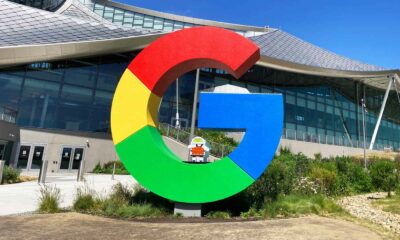
 SEO6 days ago
SEO6 days agoGoogle’s Statement About CTR And HCU
-

 WORDPRESS6 days ago
WORDPRESS6 days agoA Small Business Guide to Building An E-Commerce Website | CO
-

 SEO6 days ago
SEO6 days agoHow to Persuade Your Boss to Send You to Ahrefs Evolve
-
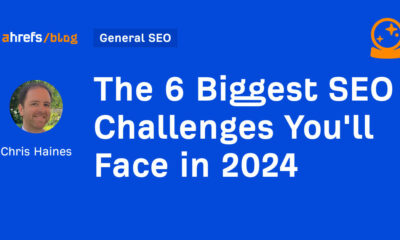
 SEO4 days ago
SEO4 days agoThe 6 Biggest SEO Challenges You’ll Face in 2024
-

 SEO4 days ago
SEO4 days agoWhy Now’s The Time To Adopt Schema Markup
-
SEARCHENGINES4 days ago
Daily Search Forum Recap: June 12, 2024















